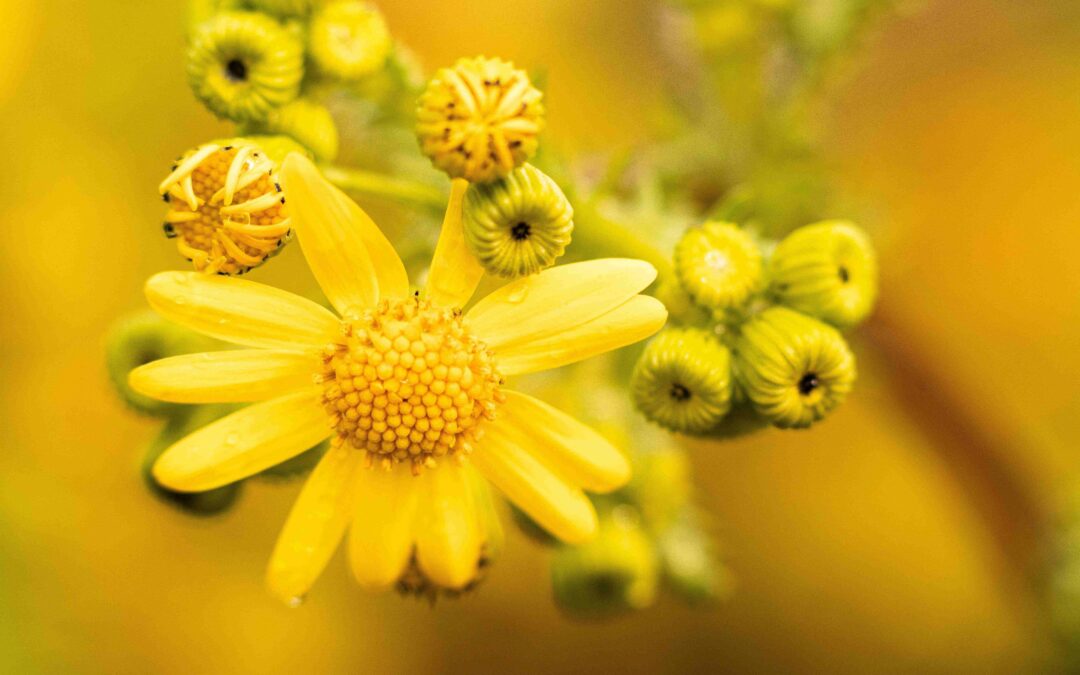Ragwort – this yellow flowering plant can be seen in fields and verges throughout England during the summer. Unfortunately, this pollinator friendly weed contains Pyrrolizidine Alkaloids which can induce liver failure in livestock and horses with fatal consequences.
Ragwort is an injurious weed. This means it is part of a group of harmful plants that has been designated by an agricultural authority as being harmful to agricultural or horticultural crops, natural habitats or ecosystems, or humans or livestock.
There are 5 main injurious weeds in the Weeds Act 1959. These include Common Ragwort, Spear Thistle, Field Thistle, Curled Dock and Broad-leaved Dock.
Landowners have an obligation to control the spread of injurious weeds. Failure to control the spread, especially if it poses a risk to livestock, can lead to legal action being taken against the landowner. Where the land is a protected site, certain eradication techniques may not be possible so advice should be obtained prior to carrying out any works.
A legal code of practice has been issued by the government to support landowners. The Weeds Act also empowers authorities to issue enforcement notices to landowners to control the spread of injurious weeds and can claim expenses back when an authority undertakes remedial works due to the landowner’s inaction.
Where the injurious weed is on neighbouring land, landowners are encouraged to first contact the neighbour informally to raise these concerns and provide an opportunity for the issue to be addressed. There is no prescribed time frame to carry out the remedial works, but a reasonable period should be given considering factors such as the number of plants, weather conditions and the growth stage.
If discussions break down, or the neighbouring landowner fails to address the issue, a report can be made to several different organisations between 1 April and 30 September including the Animal Plant and Health Agency, RSPCA and British Horse Society.
Natural England can also be contacted if it poses a threat to agricultural land and is spreading within 50 meters of agricultural land. Reports cannot be made to Natural England for injurious weeds spreading onto non agricultural land at any time.
An online form is available to ensure any complaint includes the necessary information. The information required includes the location, the type of weed, the severity of the infestation, the present land use and whether any steps have been taken to contact the landowner.
If you want to discuss this further, get in touch with a member of our Agriculture Department on 01242 801748 or www.franksmithandco.com.
10.9.25
